Haz clic aquí para leer en español
Written by Fidgit
This walk has changed how I relate to the waste we throw out. From toilet paper to tin cans. Much of the Southern Cone has banned plastic bags. We personally try to limit the use of plastic by bringing our Hyperlite Mountain Gear Sacks with us to resupply, filling those instead of plastic bags.
What do you do to engage with garbage?
I had a waste success along the Inca Trail. Amidst the multiple groups around our own, there was a smoker. As we sat at one of the passes, he lit up, burned it down, and pinched the butt into a wedge of rocks. I could sympathize with the shame and defiance of being the outsider in a crowd. Of wanting to bury it. I asked him if he would mind terribly if I packed his cigarette butt out.
“Okay. Yeah. Thank you,” he picked it out and handed it to me.
Two days later, at the Sun Gate, he was again smoking. But this time when he was done, he pulled out a small bag and packed out his own butt.
I was delighted.

I have long been aware of the trash I find along trails. It is easy enough to pack a pair of gloves and a plastic bag and fill it while walking.
Take that bag home and discard it.
Repeat.
Repeat.
Repeat.
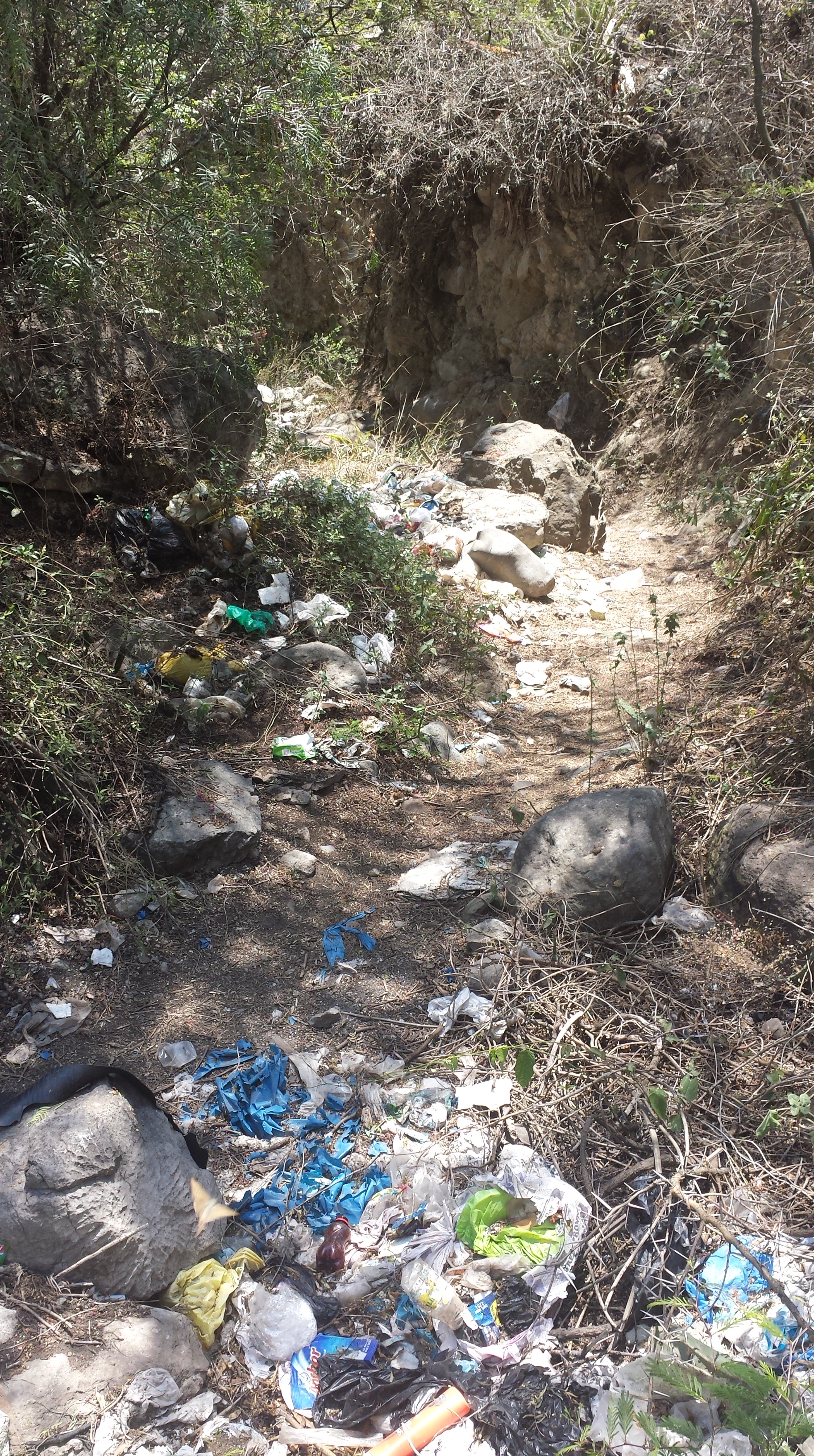
Still, none of that means that trash has stopped existing. Around the time we were walking through Chile, Greta had begun a project called #whatsinthebag. As she explains in a first blog post about it:
This is my attempt to start the conversation. To peak your curiosity, and mine as well, and to raise our collective consciousness of the stuff that we consume and discard every single day that we live and breathe. Let’s talk about it- the what, the why, the how. Let’s consider what it is made of, where it has come from and where it will go when we are finished with it. Because everything goes somewhere. There is no “away” to throw it to.
She then kept a visual chronicle of that month. It set off ripples.
It was a pivoting point in my journey.
One particular campsite in Chile, on a difficult morning, raised my ire. Littered with beer cans and liquor bottles. They were stuffed into trees, scattered on the ground, thrown into a shallow well. It took less than 10 minutes to pick them all up and a morning carrying a seeping, jangling sack tied to my pack to the next small village.
I was wrought with righteous indignation.
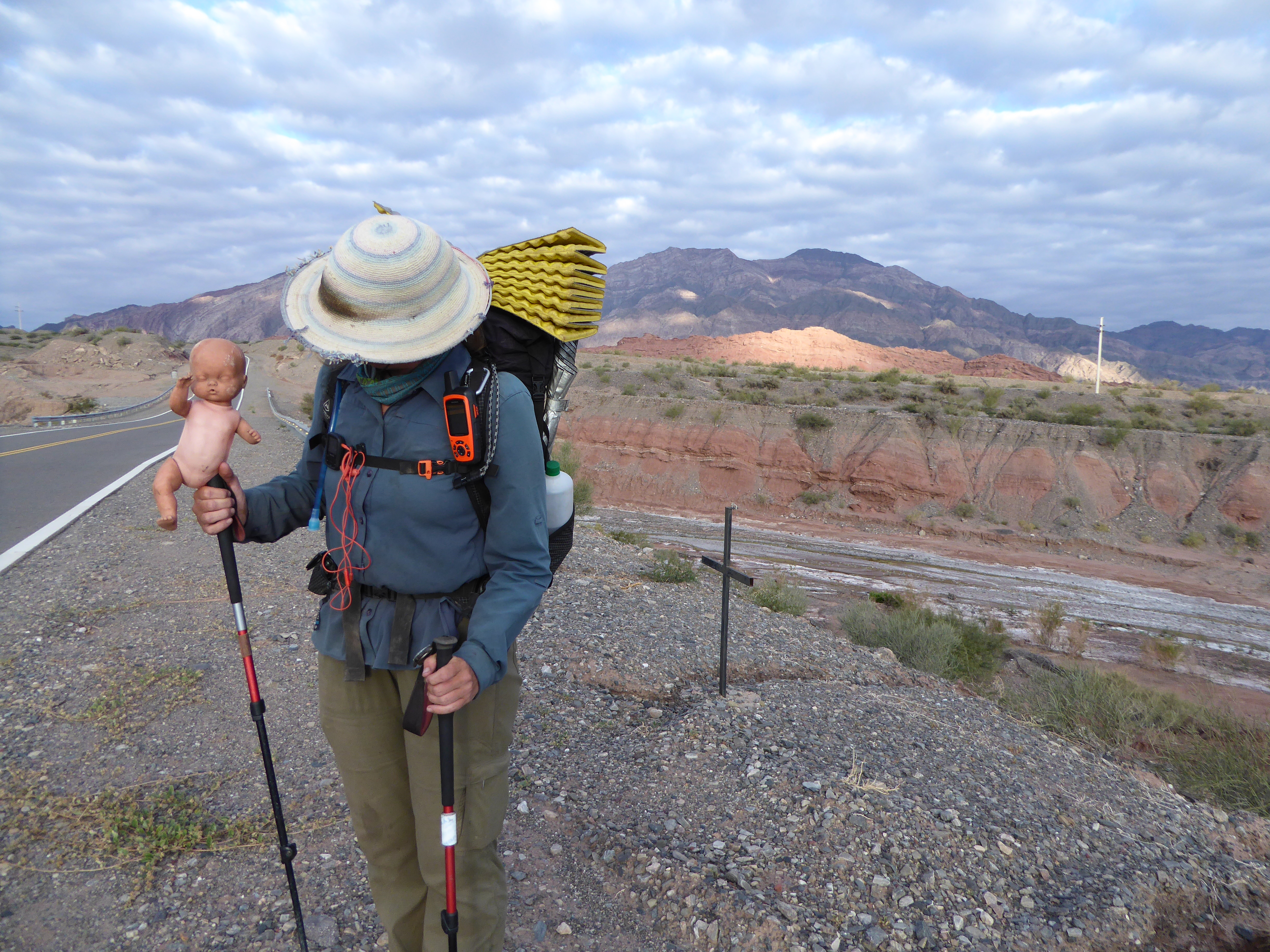
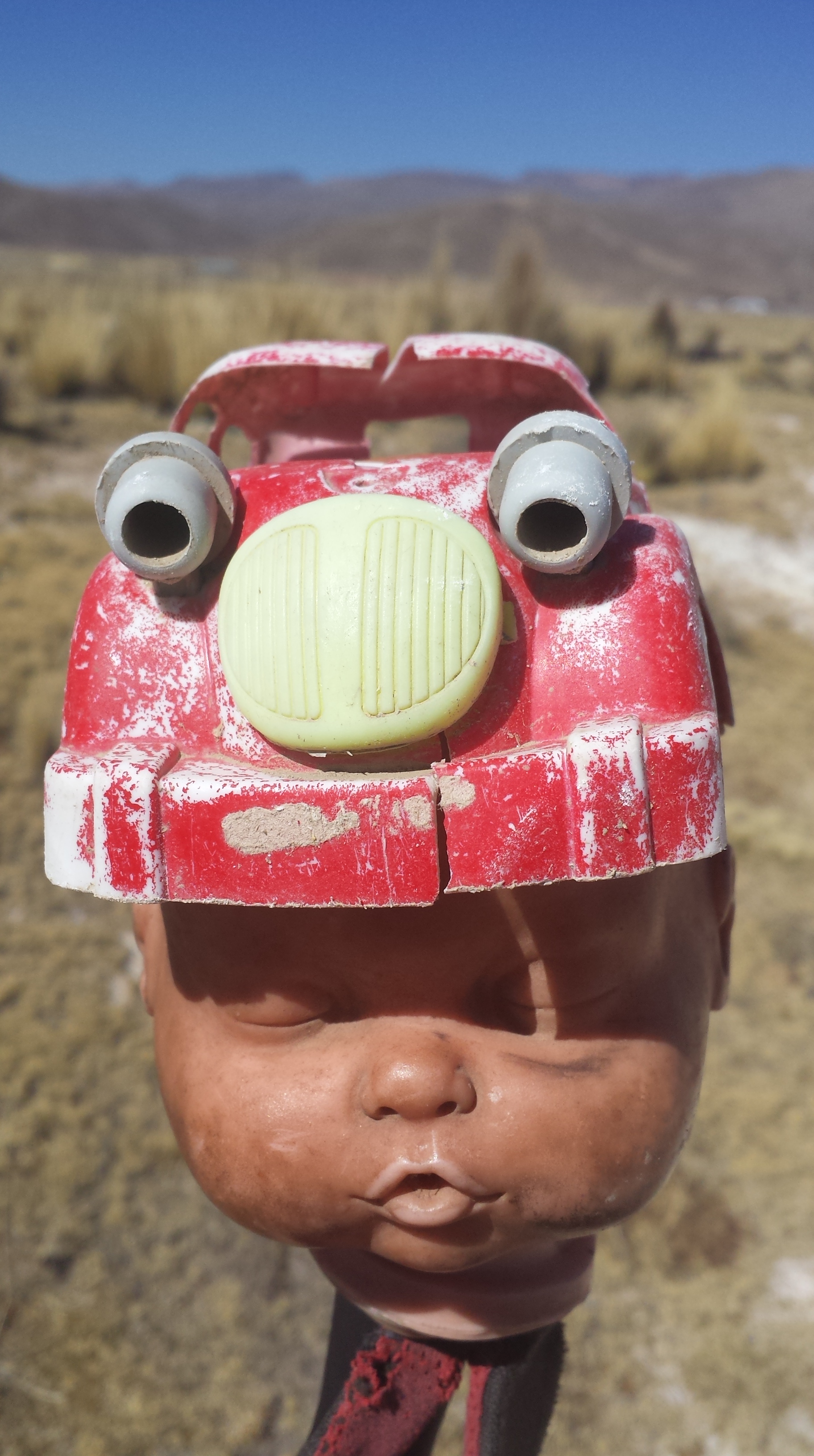
We breakfasted with a kind family. Eventually I stepped outside, photographed my haul of trash, then asked if I could throw it away.
“Of course of course!” she was so eagerly kind, “we can bury it with the rest of our trash.” It was a 2m deep pit just off the side of their property. First the dogs and chickens would pick it over, then, eventually once the pit was full, it would be covered and another dug.
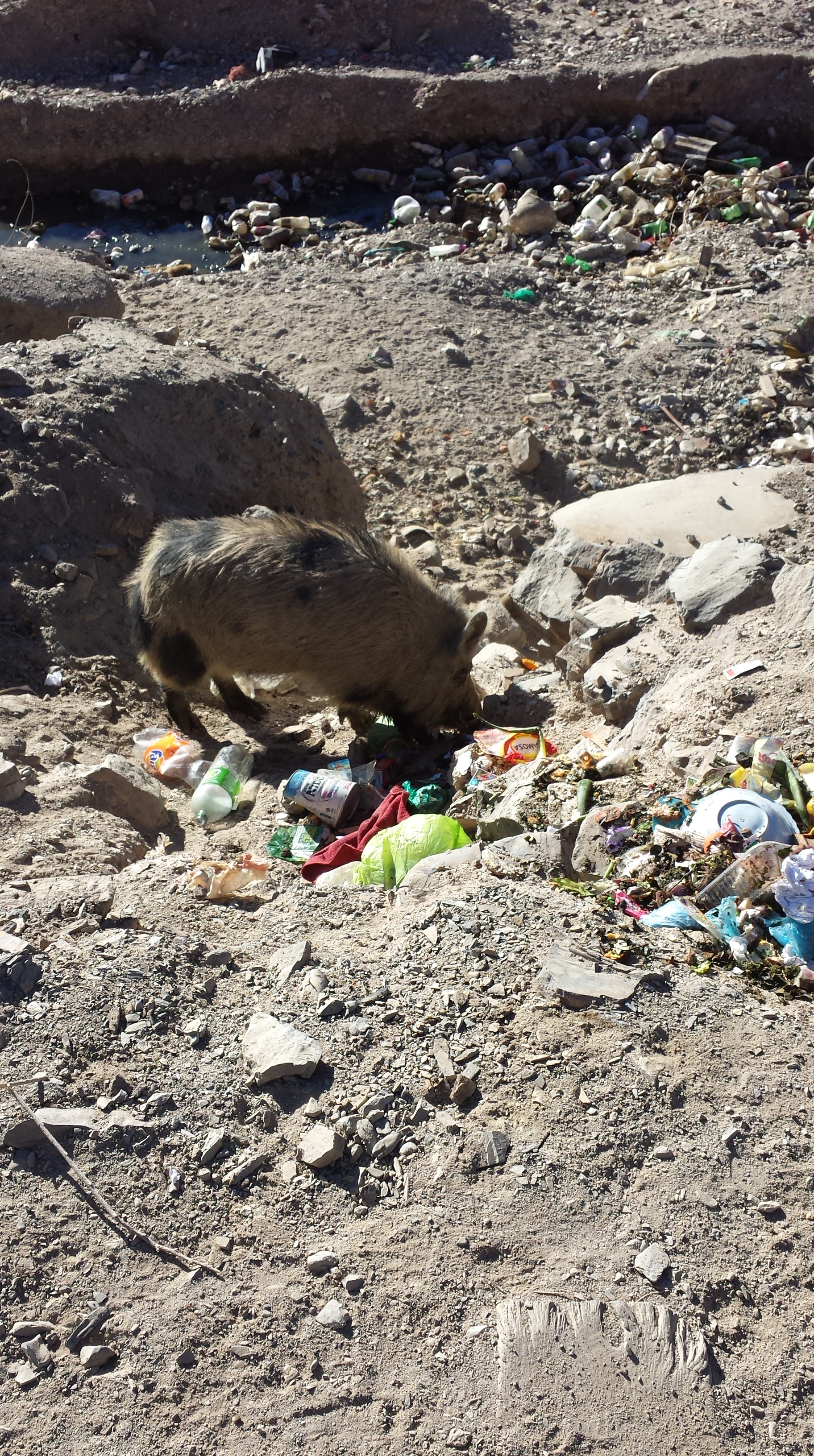
I was disappointed in us as a species. “This is not enough!” I thought, “why, back in the cities, in the U.S. we would . . . ”
My thinking hitched. Pieces tumbled into place. I realized we do the same thing.
The only difference is that we pay for the privilege to not have to see or acknowledge what happens after we have “done our part.”
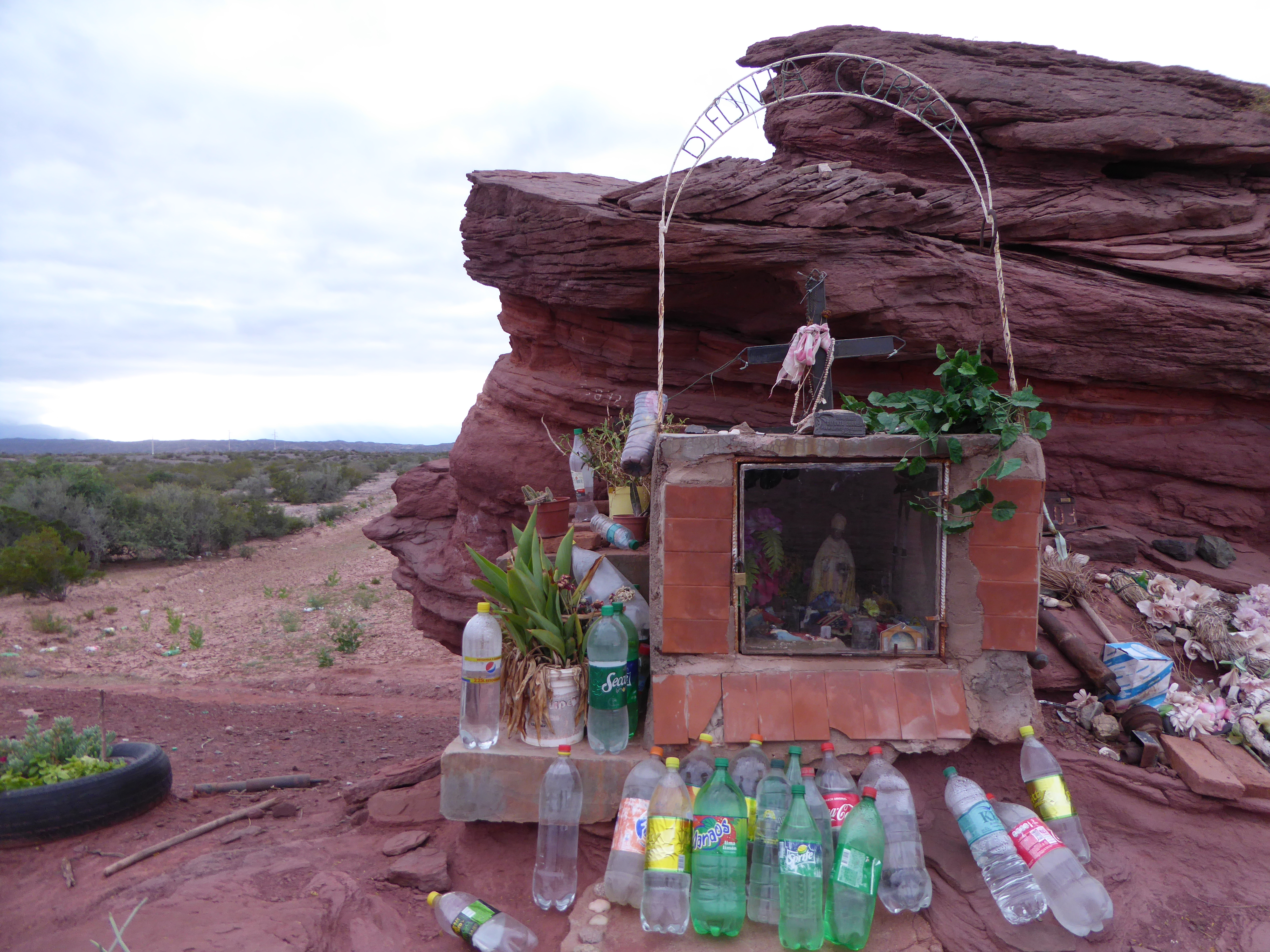
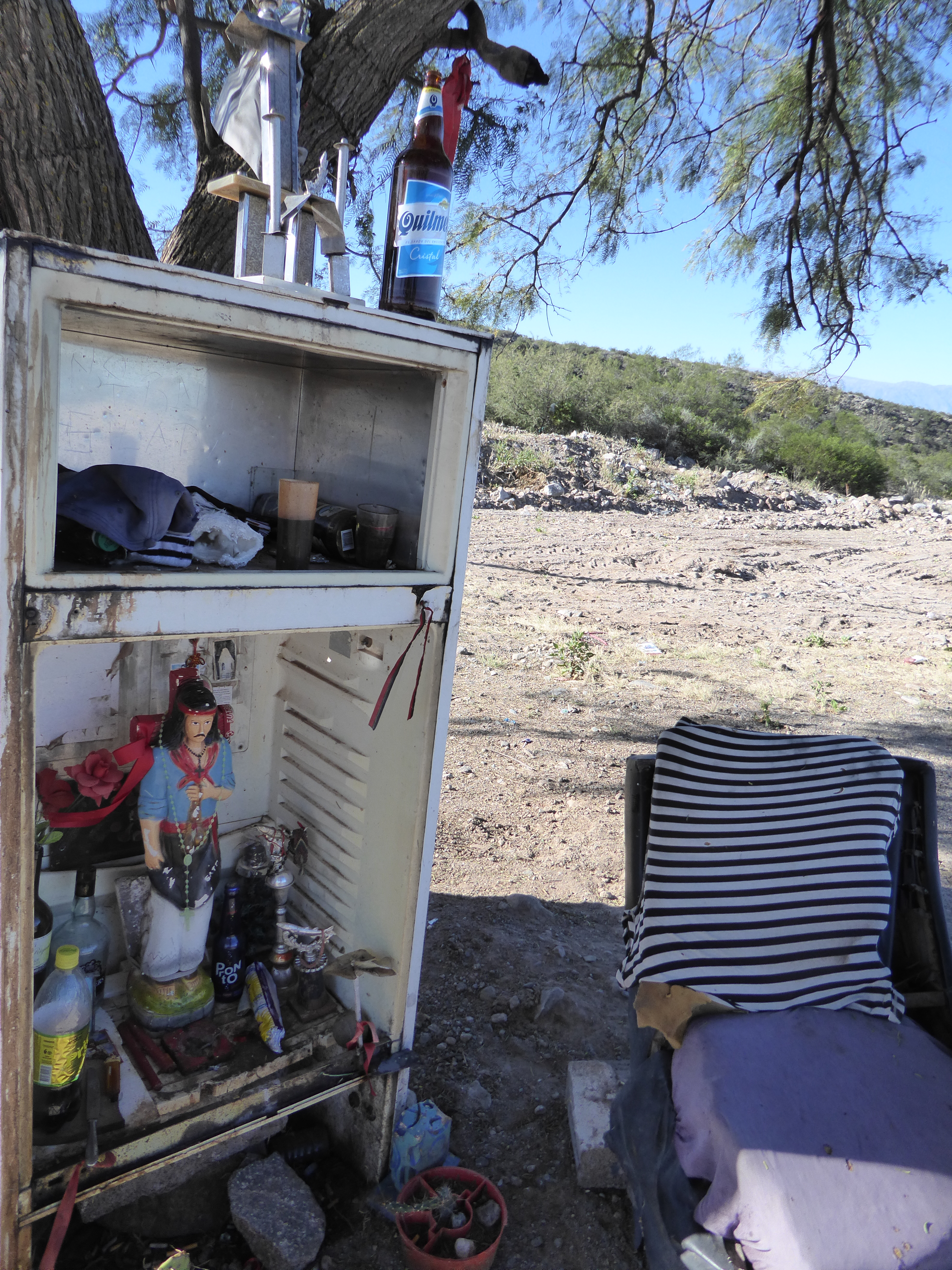
So, I have observed and become more aware of the long term role our refuse plays in our lives. Because it is here, and much of it: plastics, glass, and metals, especially, are here to stay. Greta has also coached me in preserving a gentleness of perspective. To approach with curiosity first. So, I watch the trash. I talk about it.
Many South Americans see it but don’t know what to do with it. They burn what they can. In the high mountain villages, they flush it away in the rivers. Governments erect community toilets over top of the river. We are no different than them in thinking that if it is not in our circle, it is no longer a problem. Except on this walk we follow those rivers. We walk along their shores with the currents and eddies of flotsam and refuse.

It has become a joke within the team that we always either enter or depart a city by its dump, official or not. From Punta Arenas, Chile to Abancay, Peru. There is always that stretch where we pull our Buffs over our faces and just move. And observe. The piles of trash. The animals picking through it. The people picking through it. The homes built amidst it. The rivers which flow through it.
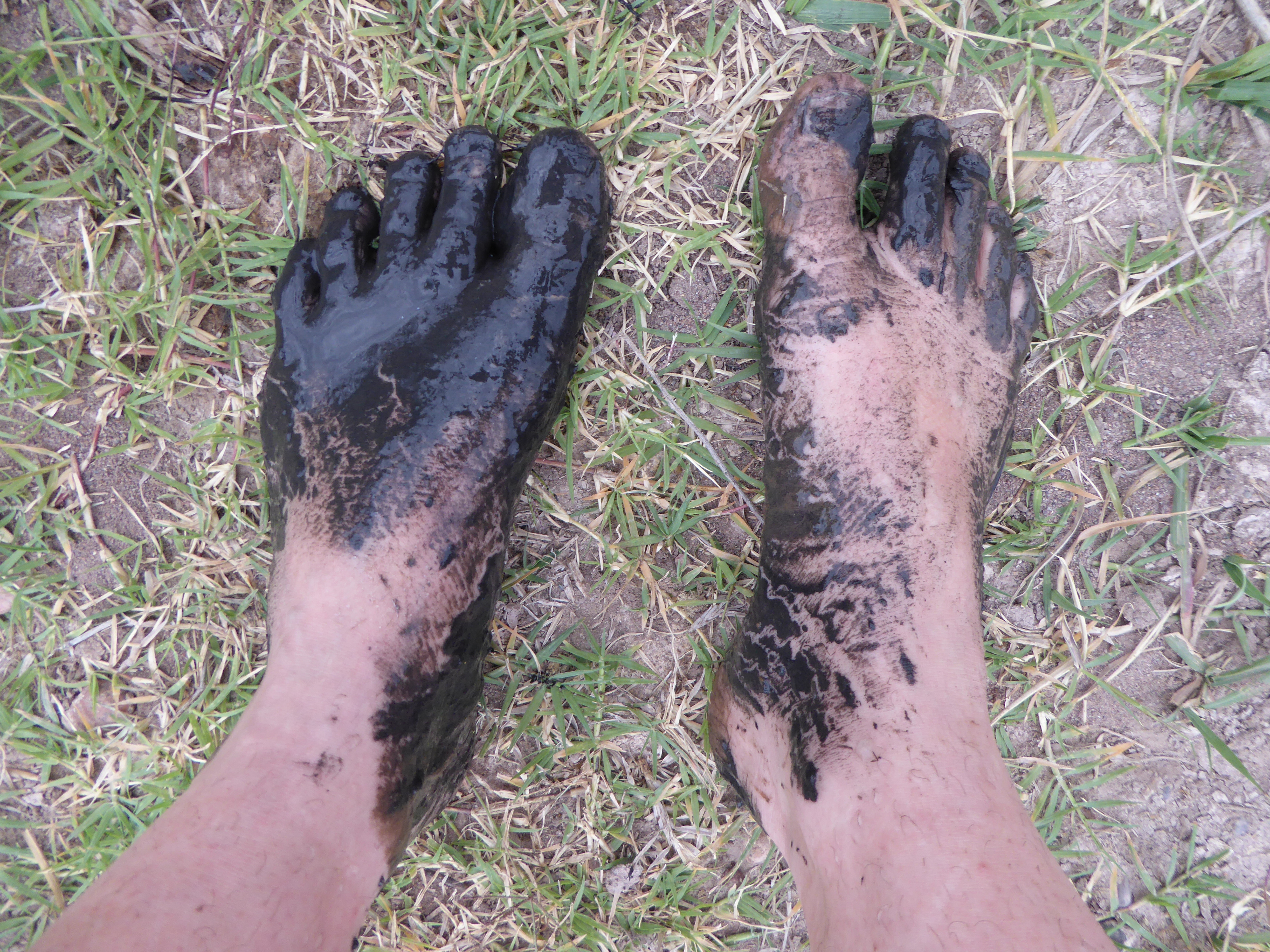
I have thought about the significance of the Three Rs.
Reduce, Reuse, Recycle.
Many modern products do not consider reduction. This was one of the lines of thinking leveled by an old park guard in central Chile:
“Yes, people here throw a lot of garbage into the forest. I remember when I was a boy, everything came in cloth sacks, or paper bags, especially in Patagonia. There was not plastic as there is now. We would re-use the cloth sacks and the paper would disintegrate or we would use it for fire.
I also remember when having a soft drink or a yogurt was a treat. Something we had maybe once a month. Now the children have these treats many times a day, each in a different little plastic container, which their parents throw out the window. So the child learns to throw it out the window. We litter more because we have more.”
It takes effort, and awareness, and DECIDING to care. Not to look away in shame. I struggle with this as I see many people throw their trash on the ground.
I feel defeated.
But still bend to pick it up and walk it over to the rubbish bin, where available.
I love my friends who are willing to get their hands dirty. Talking with Sean just a few nights ago, his talking about volunteering at a recycling center gives me hope. Got me digging through the trash the next day for recyclable bottles. Means that if I finish this post in time MLE will take me to the recycling center and then we get pretzels.
Let’s not ignore our trash, let’s engage with it.
This is how one comes to understand.
This is how we come to care.
That is how we move forward.


Hablemos de la Basura
Escrito por Fidgit
Traduccion por Henry Tovar
Esta caminata ha cambiado la forma en que me identifico con los desechos que arrojamos. Desde papel higiénico hasta latas. Gran parte del Cono Sur ha prohibido las bolsas de plástico. Intentamos limitar el uso del plástico al traer nuestros sacos Hyperlite Mountain Gear con nosotros para reabastecernos, llenando esos en lugar de bolsas de plástico.
¿Qué haces para involucrarte con la basura?
Tuve un gran éxito en el Camino Inca. En medio de los múltiples grupos alrededor de los nuestros, había un fumador. Mientras estábamos sentados en uno de los pases, él se iluminó, lo quemó y pellizcó la colilla en una cuña de rocas. Podría simpatizar con la vergüenza y el desafío de ser el extraño en una multitud. De querer enterrarlo. Le pregunté si le importaría terriblemente si empacaba su colilla.
“Está bien. Sí. Gracias”, lo recogió y me lo entregó.
Dos días después, en la Puerta del Sol, estaba fumando nuevamente. Pero esta vez, cuando terminó, sacó una pequeña bolsa y empacó su propio trasero.
Estaba encantado.

Hace tiempo que conozco la basura que encuentro por los senderos. Es bastante fácil empacar un par de guantes y una bolsa de plástico y llenarla mientras camina.
Lleva esa bolsa a casa y deséchala.
Repetir.
Repetir.
Repetir.

Aún así, nada de eso significa que la basura ha dejado de existir. Cuando estábamos caminando por Chile, Greta había comenzado un proyecto llamado #whatsinthebag. Como explica en una primera publicación en el blog al respecto:
Este es mi intento de comenzar la conversación. Para aumentar su curiosidad, y la mía también, y para elevar nuestra conciencia colectiva de las cosas que consumimos y desechamos todos los días que vivimos y respiramos. Hablemos de eso: el qué, el por qué, el cómo. Consideremos de qué está hecho, de dónde viene y adónde irá cuando lo hayamos terminado. Porque todo va a algún lado No hay “lejos” para arrojarlo.
Luego guardó una crónica visual de ese mes. Emitió ondas.
Fue un punto pivote en mi viaje.
Un campamento en particular en Chile, en una mañana difícil, provocó mi ira. Lleno de latas de cerveza y botellas de licor. Fueron metidos en los árboles, esparcidos en el suelo, arrojados a un pozo poco profundo. Tardé menos de 10 minutos en recogerlos a todos y en una mañana con un saco filtrón y tintineante atado a mi mochila al siguiente pueblo pequeño.
Fui forjado con justa indignación.


Desayunamos con una familia amable. Finalmente, salí, fotografié mi carga de basura y luego pregunté si podía tirarla.
“¡Por supuesto por supuesto!” ella era tan amable, “podemos enterrarlo con el resto de nuestra basura”. Era un pozo de 2 m de profundidad justo al lado de su propiedad. Primero los perros y las gallinas lo recogían, luego, una vez que el pozo estaba lleno, se cubría y se cavaba otro.

Me decepcionó como especie. “¡Esto no es suficiente!” Pensé, “por qué, de vuelta en las ciudades, en los EE. UU. Lo haríamos …”.
Mi pensamiento se enganchó. Las piezas cayeron en su lugar. Me di cuenta de que hacemos lo mismo.
La única diferencia es que pagamos por el privilegio de no tener que ver o reconocer lo que sucede después de que hemos “hecho nuestra parte”.


Por lo tanto, he observado y me he vuelto más consciente del papel a largo plazo que nuestra basura juega en nuestras vidas. Porque está aquí, y gran parte: plásticos, vidrio y metales, especialmente, llegaron para quedarse. Greta también me ha enseñado a preservar una delicadeza de perspectiva. Acercarse con curiosidad primero. Entonces, miro la basura. Yo hablo de eso
Muchos sudamericanos lo ven pero no saben qué hacer con él. Queman lo que pueden. En los pueblos de alta montaña, lo tiran en los ríos. Los gobiernos erigen inodoros comunitarios en la parte superior del río. No somos diferentes a ellos al pensar que si no está en nuestro círculo, ya no es un problema. Excepto en este paseo seguimos esos ríos. Caminamos por sus costas con las corrientes y los remolinos de restos flotantes y basura.


He pensado en la importancia de las Tres Rs.
Reduzca la reutilización reciclan.
Muchos productos modernos no consideran la reducción. Esta fue una de las líneas de pensamiento planteadas por un antiguo guarda parque en el centro de Chile:
“Sí, la gente arroja mucha basura al bosque. Recuerdo que cuando era niño, todo venía en sacos de tela o en bolsas de papel, especialmente en la Patagonia. No había plástico como el que hay ahora. Volveríamos a usarlo. los sacos de tela y el papel se desintegrarían o lo usaríamos para el fuego. También recuerdo cuando tomar un refresco o un yogur era una delicia. Algo que tuvimos quizás una vez al mes. Ahora los niños tienen estas golosinas muchas veces al día, cada una en un pequeño recipiente de plástico diferente, que sus padres tiran por la ventana. Entonces el niño aprende a tirarlo por la ventana. Nosotros ensuciamos más porque tenemos más “.
Me siento derrotado.
Pero aún así inclínate para recogerlo y caminar hacia el cubo de basura, donde esté disponible
Amo a mis amigos que están dispuestos a ensuciarse las manos. Hablar con Sean hace unas noches, el hecho de que él hable sobre el voluntariado en un centro de reciclaje me da esperanzas. Me hizo cavar en la basura al día siguiente para botellas reciclables. Significa que si termino esta publicación a tiempo, MLE me llevará al centro de reciclaje y luego obtendremos pretzels.
No ignoremos nuestra basura, participemos de ella.
Así es como uno llega a entender.
Así es como nos importa.
Así es como avanzamos.








Comments (7)
Thanks for writing this. I remember studying in Lima, walking to the beach and seeing it covered in trash, plastic, a dead dog, flip flops. It’s mind blowing. I thought such waste was relegated to Latin America, but hiking in WNC, I see trash deposited on the sides of roads in much the same manner. It’s certainly changed me. Thanks again.
Thank YOU for keeping your eyes open as well as for joining us on this journey.
Thanks for your insightful commentary on our human problem with trash, We have soiled the land and the oceans with throw away plastic trash. We need to find a way to do better fast!
Micro plastics in our waters has become an in depth front of study.
Awareness is difficult and eye opening.
I thought this offered some interesting perspective on the questions of plastic: http://www.bbc.com/news/science-environment-42264788
Very insightful commentary on a very real problem. Hope we can change the attitude of billions of people who don’t seem to care about this planet before it is too late!! This well written article will help.
It’s through tears I type my response to this both, heartening, and depressing write up, Fidget. A part of me feels doomed and hopeless, and thinks we’re so far gone as a species the only way out of this is by Mother Nature erasing us from her body forever. And erasing all the mistakes we made during our small stay on her; think global extinction/cataclysm. But another part of me feels enlivened and hopeful that future generations will have their eyes opened wide, and come up with a sustainable way to deal with trash.
While staying on a small island in the Caribbean for a few months, the first year, we would travel with a 40 gallon plastic trash bag and pick up trash on the island wherever we saw it, which made us feel like good citizens and caretakers of the earth and island. Yet, when we saw where the stuff we picked up wound up (a small landfill on the island with trash overflowing the perimeters into the ocean) felt a horrible sense of futility – a labor in vain if you will.
Fortunately, the following year we returned to find that the trash problem not only on the streets, but also in the landfill had gotten so much attention that the municipality stepped up and had created a recycling center. There was a noticeable difference from the previous year, in that there was less trash on the streets, and the overflow problem at the landfill had been addressed to the point where stuff was no longer washing into the bay.
I love, and live by those words you mention the 3 R’s…especially trying hard with the R that stands for REDUCE…no more plastic straws in restaurants, and where I can get away with it, no more plastic lids on cups – coffee, or soft drinks, which yes, I still drink, but with a global awareness of where the stuff goes when I am done with it.
Don’t get discouraged, and keep doing what you’re doing. I love ya!